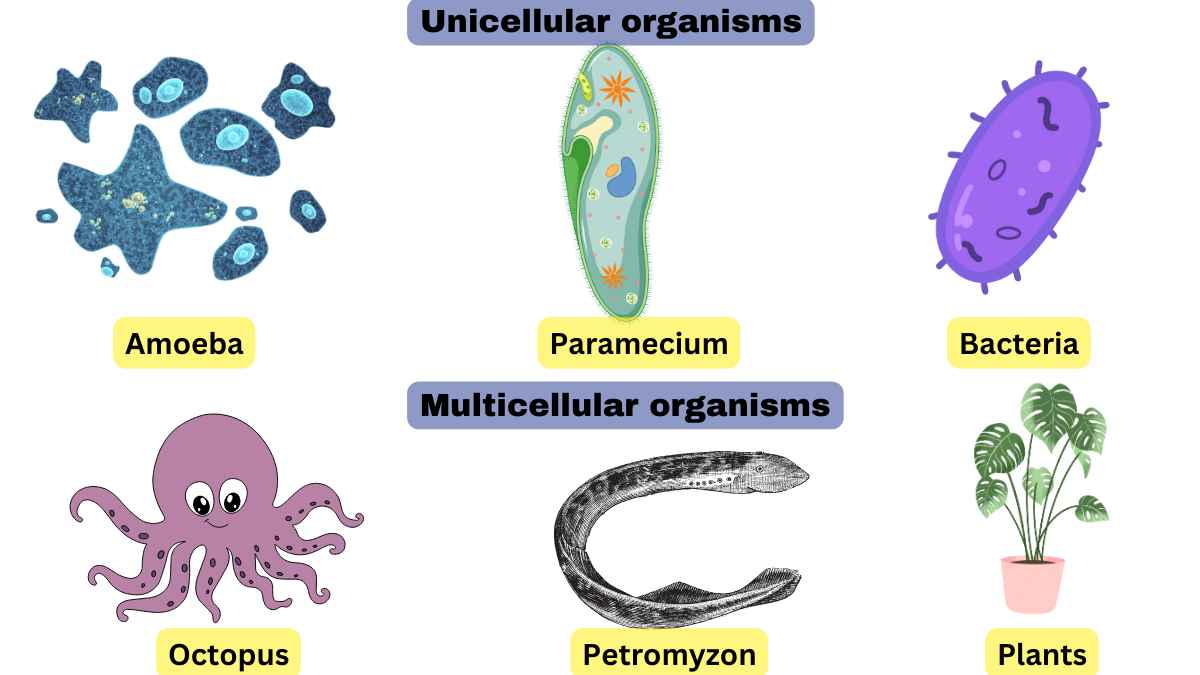The key difference between Unicellular and Multicellular organism is that Uni-cellular organisms are composed of a single cell, while multi-cellular organisms are composed of multiple cells working together.

What is Unicellular Organism?
A unicellular organism, also known as a single-celled organism, is a living organism that consists of only one cell. This means that all the functions necessary for life, such as metabolism, reproduction, and response to the environment, are carried out within a single, individual cell. These organisms are in contrast to multicellular organisms, which are composed of many cells working together to form a complete organism.
Examples of unicellular organisms include bacteria, archaea, some types of algae, protozoa, and yeast. Despite their small size and simple structure, unicellular organisms play crucial roles in various ecosystems and are fundamental to the Earth’s biosphere. They come in a diverse range of shapes and sizes, and their adaptability has allowed them to thrive in various environments, from extreme habitats like deep-sea vents to the human body.
What is Multicellular Organism?
A multicellular organism is a living being composed of multiple cells working together in a coordinated manner to perform various functions and sustain life. Unlike unicellular organisms, which consist of only one cell that carries out all life processes, multicellular organisms are made up of specialized cells organized into tissues, organs, and systems that collaborate to support the overall functions of the organism.
The division of labor among different cell types allows multicellular organisms to achieve complex tasks and adapt to a wide range of environments. This organization also enables them to grow larger and develop intricate structures, leading to a diverse array of plant and animal species on Earth.
Humans, animals (such as dogs, cats, and birds), plants, fungi, and many other living organisms are examples of multicellular organisms. The ability to form multicellular structures is a significant evolutionary step that has contributed to the diversity and complexity of life on our planet.
Unicellular vs Multicellular Organism
The key difference between unicellular and multicellular is given below
| Aspect | Unicellular Organisms | Multicellular Organisms |
| Definition | Consist of a single cell. | The coordinated response among specialized cells. |
| Size | Microscopic to small. | Can vary greatly in size. |
| Complexity | Simple in structure and organization. | Increased complexity and specialization of cells. |
| Reproduction | Asexual or sexual reproduction. | Sexual reproduction is common. |
| Metabolic Activities | Performed by a single cell. | Divided among specialized cells. |
| The coordinated response among specialized cells. | Generally lack specialized cell types. | Cells differentiate to perform specific functions. |
| Communication | Limited or absent communication. | Cells communicate through chemical signals. |
| Response to Environment | Respond to external stimuli. | Coordinated response among specialized cells. |
| Lifespan | Typically shorter lifespan. | Longer lifespan with aging and mortality. |
| Examples | Bacteria, protozoa, yeast. | Animals, plants, fungi. |
